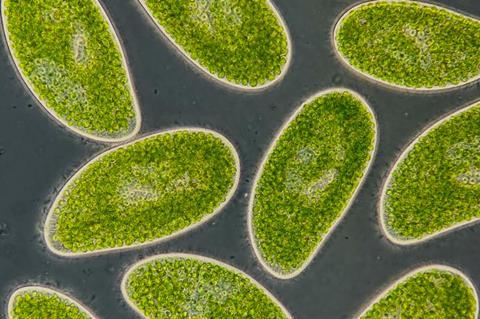The humble peat bog conjures images of a brown, soggy expanse. But it turns out to have a superpower in the fight against climate change.

For thousands of years, the world’s peatlands have absorbed and stored vast amounts of carbon dioxide, keeping this greenhouse gas in the ground and not in the air. Although peatlands occupy just 3% of the land on the planet, they play an outsized role in carbon storage – holding twice as much as all the world’s forests do.
The fate of all that carbon is uncertain in the face of climate change. And now, a new study suggests that the future of this vital carbon sink may be affected, at least in part, by tiny organisms that are often overlooked.
Locked up
Most of the carbon in peatlands is locked up in the spongy layers of mosses, dead and alive, that carpet the ground. There, the cold, waterlogged, oxygen-starved conditions make it hard for plants to decompose. This keeps the carbon they absorbed during photosynthesis locked up in the soil instead of leaking into the atmosphere.
But rising global temperatures are drying peatlands out, turning them from carbon sinks to potential carbon sources.
In a study published March 3 in the journal Global Change Biology, a team led by Duke biology professor Jean Philippe Gibert and doctoral student Christopher Kilner tested the effects of climate change on little creatures called protists that live among the peatland mosses.
Abundant and important
Not only are protists abundant – collectively, they weigh twice as much as all the animals on the planet – they also play a role in the overall movement of carbon between peatlands and the atmosphere.
That’s because as protists go about the business of life – eating, reproducing – they suck in and churn out carbon too.
Some protists draw in CO2 from the air to fuel their growth. Other protists are predators, gobbling up nitrogen-fixing bacteria the peatland mosses rely on to stay healthy.
Climate simulations
In a bog in northern Minnesota, researchers led by Oak Ridge National Laboratory have built 10 open-topped enclosures, each 40 feet across, designed to mimic various global warming scenarios.
The enclosures are controlled at different temperatures, ranging from no warming all the way up to 9 degrees Celsius warmer than the surrounding peatland.
Half of the enclosures were grown in normal air. The other half were exposed to carbon dioxide levels more than two times higher than today’s, which we could reach by the end of the century if the burning of fossil fuels is left unchecked.
Surprising changes
Five years after the simulation experiment began, the Duke team was already seeing some surprising changes.
“The protists started behaving in ways that we didn’t expect,” Kilner said.
At current CO2 levels, most of the more than 200,000 protists they measured became more abundant with warming. But under elevated CO2 that trend reversed.
What’s more, the combined effects of warming and elevated CO2 led to a reshuffling in the protists’ feeding habits and other traits known to influence how much CO2 they give off during respiration – in other words, how much they contribute to climate change themselves.
Mitigating climate change
Exactly what such changes could mean for peatlands’ future ability to mitigate climate change is unclear, but they’re likely to be important.
Overall, the results show that a neglected part of the peatlands’ microbial food web is sensitive to climate change too, and in ways that “are currently not accounted for in models that predict future warming,” Gibert said.
This research was supported by the U.S. Department of Energy (DE-SC0020362). Other authors include Alyssa Carrell, Dale Pelletier and David Weston of Oak Ridge National Laboratory; and Daniel Wieczynski, Samantha Votzke, Katrina DeWitt, Andrea Yammine, and Jonathan Shaw of Duke.







No comments yet